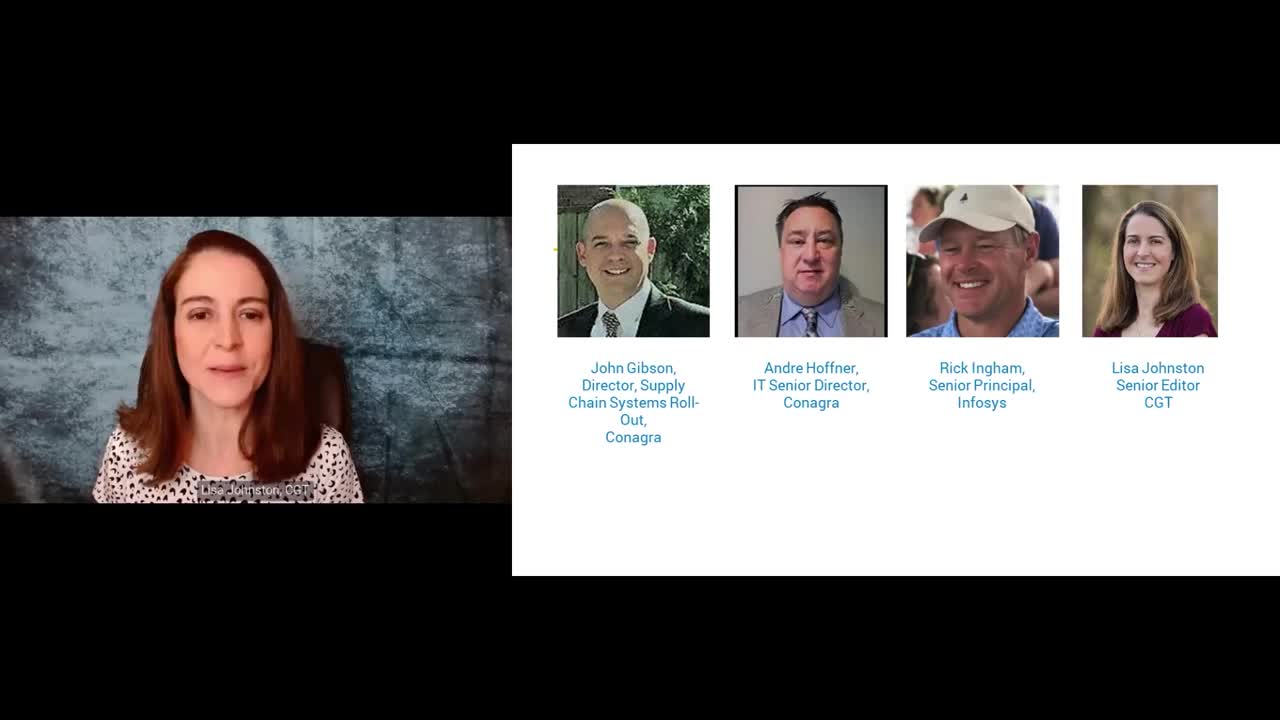CGT Webinar: Conagra Brands’ ‘Secret Sauce’ Integration Playbook
Integrating a new plant can be a challenge: integrating 14 in a single acquisition can be a nightmare
When Conagra Brands acquired Pinnacle Foods in 2018, it was big deal in the industry – and left John Gibson and Andre Hoffner with a lot of work to do. But, as Director of Supply Chain Systems Roll-Out and Senior IT Director respectively, they had been there before. They also had a tried and tested model for integration – along with an experienced integration partner in Infosys.
Read on for insights from John and André – as well as Rick Ingham, Senior Principal at Infosys – on how to pull in business, IT discovery, and integration teams to make a success of the transition, despite its complexity and the challenging circumstances provided by the COVID pandemic.
Insight #1: Play by your own playbook.
When we look to acquire another brand, it must work within our portfolio – and it has to be an organization that will assimilate into our way of working. It would be a mistake to start transforming your core to accommodate others. We have core competencies in doing frozen food, for example, so we know how to assimilate another frozen food company into our systems. In short, don’t let the tail wag the dog.
Insight #2: Look before you leap
Although you need to bring the other plants into your way of working, that doesn’t mean you ignore how they work. A key part of our process was the discovery phase, where we worked hard to understand how the acquired plants had been working before. And this means more than just talking. Sure, we ask a million questions, but we also walk the floor and take a good look at how people do their jobs. Before we can make them Conagra, we must find out who they are.
Insight #3: Work in waves
Because Pinnacle was a multi-plant project, we were in multiple locations at the same time – but at different stages. Therefore, we have different teams in clearly designed waves of activity. First the discovery team, followed by the advanced team, then the training team, before handing off to the Infosys stabilization team. Infosys are there to ensure that the other Conagra IT teams can move onto the next plant.
Insight #4: Move quickly and move at scale
When you acquire, you often take over several plants – and it is unlikely that you will have an implementation team big enough to do it quickly enough. There is also a limited window of opportunity, and you need to act fast. Therefore, I would recommend working with a partner and we were fortunate enough to have Infosys as our strategic partner to make this all happen within the necessary timeframe.
Insight #5: Create “One Team”
To us it didn’t matter if somebody was part of Infosys, part of Conagra or part of one of the acquired companies. Everybody was part of one team, and this is a principle that helps not only coordinate processes but to make people feel good about what they’re doing. One core part of this idea was to pair up similar job roles, such as taking an experience Conagra buyer and getting them to talk and collaborate with a buyer from the acquired company.
Insight #6: Get the business functions behind you
A key part of our process was to create an integration board that includes the heads of the different business functions, such as transport, HR, finance and so on. We meet as a board together, but we also talk separately to each function in to ask them what they are doing to prepare for the new environment. At those meetings we also tell them what we are doing. This way we can make sure that we have these people on our side and driving toward the same goals. We never forget that part of our promise to them is that we will make them look good!
Insight #7: Sometimes you just have to break the rules
When the pandemic first appeared, everything changed. While we were following a proven process, we also had to show that we could be scrappy and creative when we needed. This is true of any integration when unforeseen factors come into play – they require you to act in ways that you wouldn’t have considered. For example, at one point, we stopped and put our schedule back three months. It wasn’t an easy decision, and we didn’t enjoy saying it, but it was right for the business.
Insight #8: Offer ‘overwhelming support’
After the go-live, there is a period of stabilization. During this time, we aimed to offer ‘overwhelming support’. We tried to make it so no one was more than a few feet away from someone who could help if they had questions. On the first Monday, they’re usually a bit shell-shocked but by Wednesday they start asking interesting questions. After a few weeks, they are so comfortable with the new systems that they ask us to leave - which is what we want!


